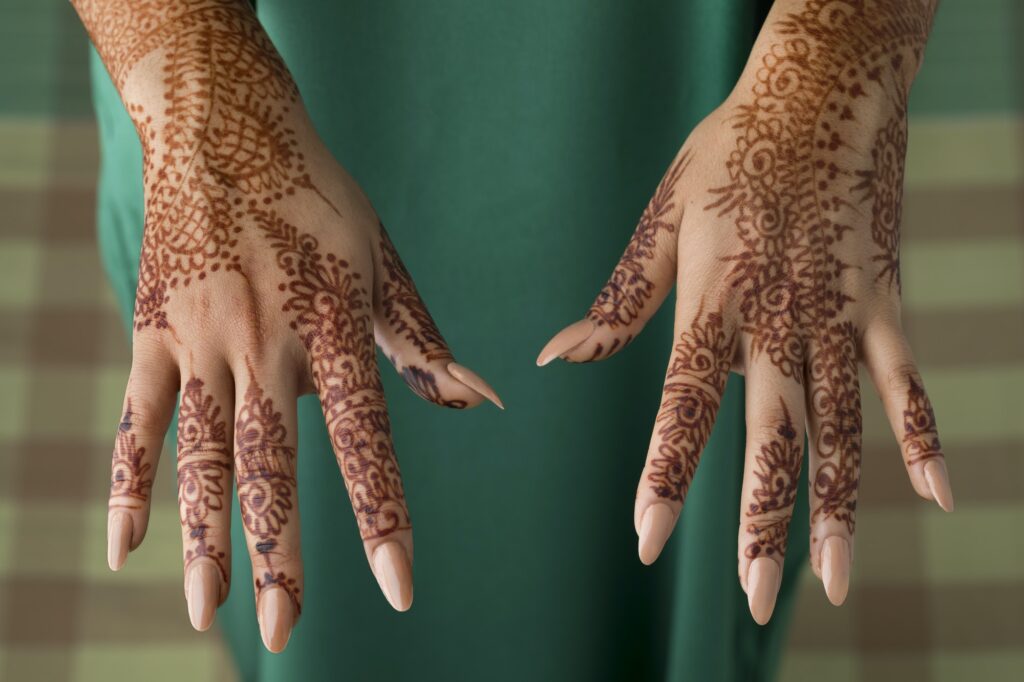You know it as a temporary tattoo. Other cultures take it as tradition. Whether it’s a party fixture or part of an important occasion, henna is a growing parcel of body art. Here are interesting henna facts you might not know.
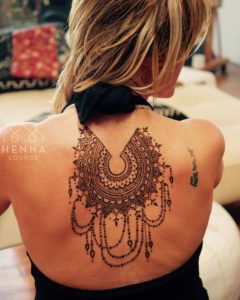 Henna has become more and more popular all over the world. What started out as a cultural tradition and a distinctive part of the Asian culture, is now a familiar fixture in the western world. Many people have now taken an interest in henna that people all over the country are taking courses to learn how to paint henna.
Henna has become more and more popular all over the world. What started out as a cultural tradition and a distinctive part of the Asian culture, is now a familiar fixture in the western world. Many people have now taken an interest in henna that people all over the country are taking courses to learn how to paint henna.
But what is henna? Where did it come from? There is no doubt that henna tattoos are beautiful and make for interesting temporary body art but what do we know about the custom? Here are some interesting henna facts you need to know.
What is Henna?
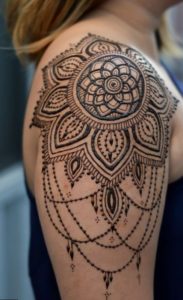 Henna is a hardy little shrub that grows in tropical or hot and arid climates. It is a flowering shrub with fragrant flowers that farmers harvest to create perfumes. They would collect it twice a year; then they would dry the leaves completely and grind it into a fine powder that would help preserve the dye within the leaves. They mix the henna powder with a couple of ingredients like lemon juice, as it would increase tint to release a more concentrated color. One of the common uses of henna is a natural dye for clothing, hair, leather, and skin.
Henna is a hardy little shrub that grows in tropical or hot and arid climates. It is a flowering shrub with fragrant flowers that farmers harvest to create perfumes. They would collect it twice a year; then they would dry the leaves completely and grind it into a fine powder that would help preserve the dye within the leaves. They mix the henna powder with a couple of ingredients like lemon juice, as it would increase tint to release a more concentrated color. One of the common uses of henna is a natural dye for clothing, hair, leather, and skin.
One of the most interesting henna facts is that for centuries people have already been practicing the art of henna. It has been around for over 5,000 years in the Middle East, India, Africa, and Pakistan but there are ancient records that show they have been practicing the art of henna for over 9,000 years. It is originally from Persia, the people use the natural dye within the leaves of the henna plant (Lawsonia inermis) for different cultures and traditions including birth, coming of age, marriage, and death.
They would also decorate the ancient Egyptian mummies with henna. In the olden times, henna was not only a favorite adornment for the rich but the poor, because they could not afford jewelry. Now these are some interesting henna facts that you didn’t know.
Types of Henna
Jamila
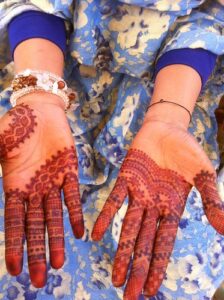 It is a type of henna that is red/orange in color and comes recommended by Henna artists. Its dark stain and natural ingredients always produce consistent results.
It is a type of henna that is red/orange in color and comes recommended by Henna artists. Its dark stain and natural ingredients always produce consistent results.
This type of henna is a favorite among artists. It is also a favorite among organic hair care enthusiasts. One of the things that makes this kind of henna is that it is usually sifted from two varieties of Jamila henna plant and contains the best leaves of the henna plant, which includes the most concentrated dye content.
Rajasthani
 Rajasthani henna powder is from the Rajasthan region of India. It is a premium quality henna powder free of pesticides and is organic. It is famous for body art and natural hair dye.
Rajasthani henna powder is from the Rajasthan region of India. It is a premium quality henna powder free of pesticides and is organic. It is famous for body art and natural hair dye.
What makes Rajasthani henna powder perfect for body art is its high dye content. The Rajasthan region has low rainfalls and drought seasons, which produces a natural stringiness that makes for a smooth application. Not only that, it produces a high dye content and ensures an excellent stain quality. It has a bright green color with a distinct smell of hay and grass.
Because the region where this type of henna grows gets less than 40 centimeters of rain every year, the henna crops become smaller. However, henna leaves result in having a higher dye content. The good thing about the henna plant is that it does not need constant or extensive watering which means no irrigation, making it appealing to farmers.
Did you know that they use every part of the henna plant? Now that is one of the most interesting henna facts. They dry the leaves; mill the henna powder for body art and coloring hair. The henna flowers are pressed for their perfume oil and they feed the twigs to the cattle. It is an ideal crop for the farmers.
Moroccan Henna
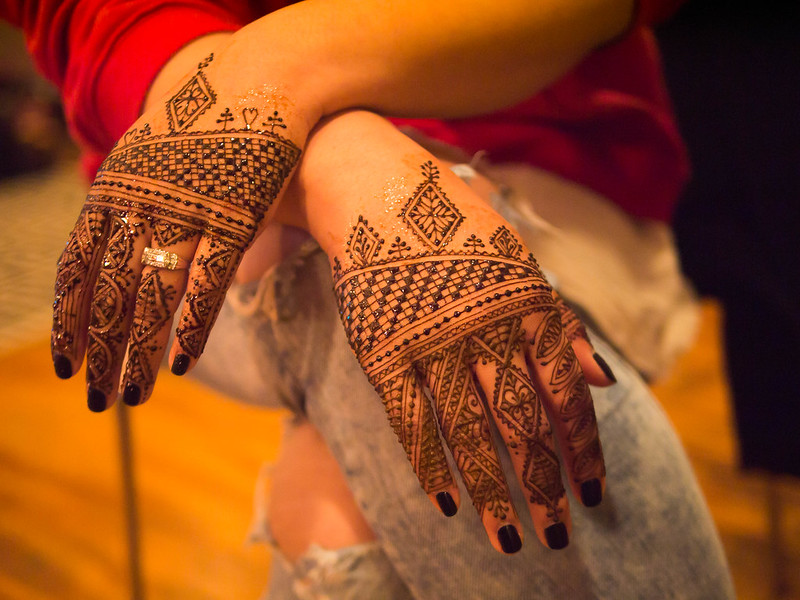 In Morocco, the people believed that henna has the energy of blessedness called Baraka. The locals used it for their powerful protective rituals and was given as an offering at the tombs of Moroccan Sufi Saints.
In Morocco, the people believed that henna has the energy of blessedness called Baraka. The locals used it for their powerful protective rituals and was given as an offering at the tombs of Moroccan Sufi Saints.
One of the great things about this type of henna is that its pigment has a darker tint and a higher concentration. If you are in a hurry, the Moroccan henna is perfect, as you do not need to leave it overnight. Now that is an interesting henna fact that is useful when you’re in a hurry and in need of henna art.
Yemeni Henna
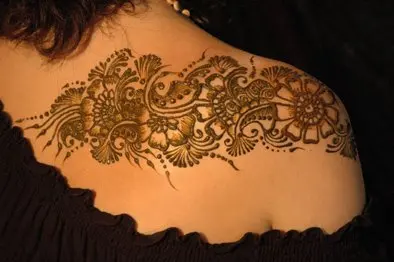 The Yemeni henna has a deep dark rich stain that develops into a lovely burgundy red color. It is known to be the best and most potent henna in the market. When using the fresher Yemeni henna, the color deepens. This kind of henna is more delicate and more powdery than the typical Indian henna. Yemeni henna is also preferred for hair color for its unique natural sticky consistency. It will give your existing hair color a muted reddish brown undertone especially in natural daylight. However, be careful when using it on grey, white or blonde hair as it will always turn hair into a orange, red color.
The Yemeni henna has a deep dark rich stain that develops into a lovely burgundy red color. It is known to be the best and most potent henna in the market. When using the fresher Yemeni henna, the color deepens. This kind of henna is more delicate and more powdery than the typical Indian henna. Yemeni henna is also preferred for hair color for its unique natural sticky consistency. It will give your existing hair color a muted reddish brown undertone especially in natural daylight. However, be careful when using it on grey, white or blonde hair as it will always turn hair into a orange, red color.
Black Henna is a Misnomer
Another one of the many interesting henna facts is that there is no such thing as black henna. If you hear about a product that says its black henna, be wary, as it is not a pure product. Stay away from these products as they combine indigo powder or harmful chemicals such Para-phenylenediamine. You need to make sure you are getting an all-natural product before getting one.
When dyeing your hair black, dye it with henna first, then apply a layer of indigo mixture to make your hair color pure black. To get a dark brown effect, you can mix henna and indigo.
If you want a red undertone on your black hair, apply your dye and cover your hair in clingfilm to make sure you keep in the warm and moist. To get a darker blue or black hair, leave it to air dry minus the clingfilm.
Changing the Henna Color
One of the most interesting henna facts is that additives and essential oils could change the color. If you want to make the stain darker, you can add tea tree essential oil to your henna. The high amount of Terpenes in your tea tree makes the stain darker. Black tea is also useful in darkening your henna tint as it also has a high concentration of Terpenes.
If you want to change the color of your henna to a much more in-depth hue, experiment on other concentrated additives that have an extraordinary amount of Terpenes in their system. It could improve your henna mixes and makes for an interesting color. Try using Hibiscus tea, Paprika, red wine, tea or coffee. Add an acidic liquid such as lemon juice to intensify the color results.
What’s the difference between body art henna and henna for hair?
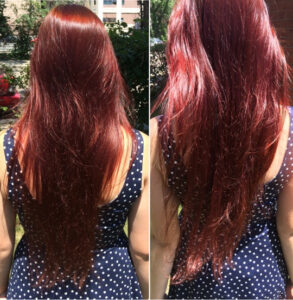 One of the most interesting henna facts is that body art quality henna, or BAQ is different from henna made for hair. For body art quality henna, it is pure, high quality, finely sifted henna. To make the henna tattoos stay longer on the skin, it needs to be pigmented as it is used for rituals on occasions such as during a marriage ceremony. To make a smooth, silky paste, they would add water to ensure easy application of intricate patterns on the skin.
One of the most interesting henna facts is that body art quality henna, or BAQ is different from henna made for hair. For body art quality henna, it is pure, high quality, finely sifted henna. To make the henna tattoos stay longer on the skin, it needs to be pigmented as it is used for rituals on occasions such as during a marriage ceremony. To make a smooth, silky paste, they would add water to ensure easy application of intricate patterns on the skin.
Now when it comes to henna that is used for hair, it is more of inferior quality and would require sifting before using. One of the most significant differences between the two kinds of henna is that in hair dye there is less Lawsone. Lawsone is the natural tincture that is responsible for coloring the skin and hair. In hair grade henna the concentration of Lawsone is 1% while in body art quality there is more than 3% which makes it more ideal for skin art.
You need to keep in mind that when you are using henna to your skin or hair, it is best to wrap your skin or hair in clingfilm. Doing this would keep the moisture and warmth in as it is wrapped around the surface, ensuring that the color would efficiently deepen. If you don’t have clingfilm, you can spray lemon juice on to the henna to keep it from drying out.
Never Apply Henna on Broken Skin
A crucial interesting henna fact is do not ever apply henna on broken skin. Henna, when it is applied to unbroken healthy skin will slowly disappear over time as old skin cells shed and renew. But when you use henna on the broken skin like over scratches, cuts or damaged skin, it will stain the skin permanently like a tattoo. This happens because the henna dye is trapped in the top layer of the broken skin.
Applying it to the broken skin also makes you susceptible to infections as it can bleed out. Keep in mind that henna powder is not a sterile product, including the many ingredients that you combine it with.
Henna as a Hair Grower
 Another interesting henna fact is that henna can help speed up hair growth and can make hair thicker. It has anti-bacterial properties that is a remedy for scalp ailments. Is dandruff a big problem for you? Henna might be the perfect solution! When you combine henna with essential oils, it creates an effective potion that can give you relief from dandruff. However, remember to do a skin patch test before you apply henna on skin that has been damaged.
Another interesting henna fact is that henna can help speed up hair growth and can make hair thicker. It has anti-bacterial properties that is a remedy for scalp ailments. Is dandruff a big problem for you? Henna might be the perfect solution! When you combine henna with essential oils, it creates an effective potion that can give you relief from dandruff. However, remember to do a skin patch test before you apply henna on skin that has been damaged.
One of the more helpful interesting henna facts is that it can promote hair growth. It nurtures the scalp and hair follicles that help stimulate circulation. Applying henna also coats each hair with a layer of protective film that adds up over time, which makes the hair look thicker and shinier.
Henna as an Air Coolant
An interesting henna fact is that you can use henna to keep your skin cool. This is especially useful during the summer months. Henna has the same natural properties similar to the eucalyptus plant. This is what cools the body. Even if you remove the henna, the body temperature remains the same. For centuries, people have been using henna as a coolant. In India, they cover their hands and feet with henna paste to protect them from heat and to keep them cool.
Desert people also use henna to cool down their bodies during blazing hot days. They would make henna pastes and soak their palms and feet, giving their bodies an air-conditioning effect.
Henna as a Natural Sunblock
 A useful, interesting henna fact is that it is the perfect sunblock. Not only does henna keep you fresh when you’re under the sun, but it also acts as a natural sunblock. This is because henna increases the production of Melanin in your body. During ancient Egyptian times, they would make ointments and salves that would have henna to apply on to their bodies. By adding henna, it not only protects their skin from the sun but also keeps it soft and supple.
A useful, interesting henna fact is that it is the perfect sunblock. Not only does henna keep you fresh when you’re under the sun, but it also acts as a natural sunblock. This is because henna increases the production of Melanin in your body. During ancient Egyptian times, they would make ointments and salves that would have henna to apply on to their bodies. By adding henna, it not only protects their skin from the sun but also keeps it soft and supple.
Henna as a Remedy for Fungal Infections
Research have shown that henna has anti-fungal properties that can be an effective in treating fungal infections. You can apply henna if your skin or nails have fungal infection. You need to watch out for the henna stain though as it can be hard to take off. One of the things that you can do to amp-up the medicinal properties of the henna paste is you can add essential oils such as Tea Tree oil. Tea tree is an excellent example as it has anti-fungal and antiseptic properties that would make the perfect natural remedy.
One of the most interesting henna facts is that it is also known for treating several skin conditions such as impetigo, a bacterial skin infection. It is one of the most common skin infections in children. Henna is applied twice a day on affected areas. A study has also shown that clinical improvement in patients suffering from hand and foot diseases using capecitabine, an anti-cancer drug using henna, revealed anti-inflammatory, antipyretic and analgesic effects of henna.
Contact Us
Do you want these popular henna tattoo designs at your next event? Our henna tattoo artists will come to your party and create these beautiful works of body art. Contact us at (970) 377-0093 (or email us at teamrjevents@gmail.com). Our talented artists will create fun, intricate designs for you. We serve the areas of Loveland, Fort Collins, Windsor, and nearby areas in Colorado.

